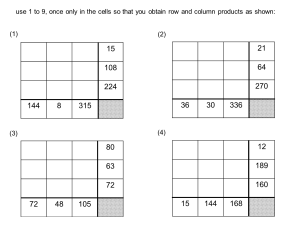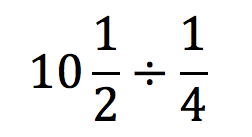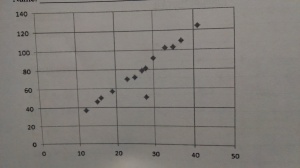Number talk today:
A pair of jeans is priced at $60, and is taxed at a rate of 8.5%. How much will the jeans cost, with tax?
New best practice: Ask for estimates first. I usually take every answer to start a number talk, but this can result in estimates becoming less valid, because students can tell both from which students share and the collective response of the room which answer is right. While I try to emphasize that estimates are often just as good as exact answers, I don’t think the kids buy it yet. Today, I asked for estimation strategies first, before allowing any students who thought they found an exact answer.
Thing I learned: Kids will do some weird stuff with numbers, and I don’t always know how to respond to it. One kid multiplied 6×8, then 6×5, then added and told me the answer was $78 (at least it was more than $60!). Another tried to multiply by 1.85, which had the spirit of a right answer, but showed a lack of sense for how big the answer should be. How do you facilitate that conversation? Have other students steer them back? Linger on the misconception, or try to move on quickly?
Thing not many students did: I mean, plenty did it, but I was hoping to see more say $66. Between errors and students who tried to get more precise, I didn’t get many kids with $66.
My favorite strategy: 10% = 6. 2% = 1.20. .5% = .30. 10 – 2 + .5 = 8.5. 6 – 1.2 + .3 = 5.10. Answer is $65.10.
This was a fun one, but I need to work on making estimation, and estimating with friendly numbers, a go-to strategy for my students.












